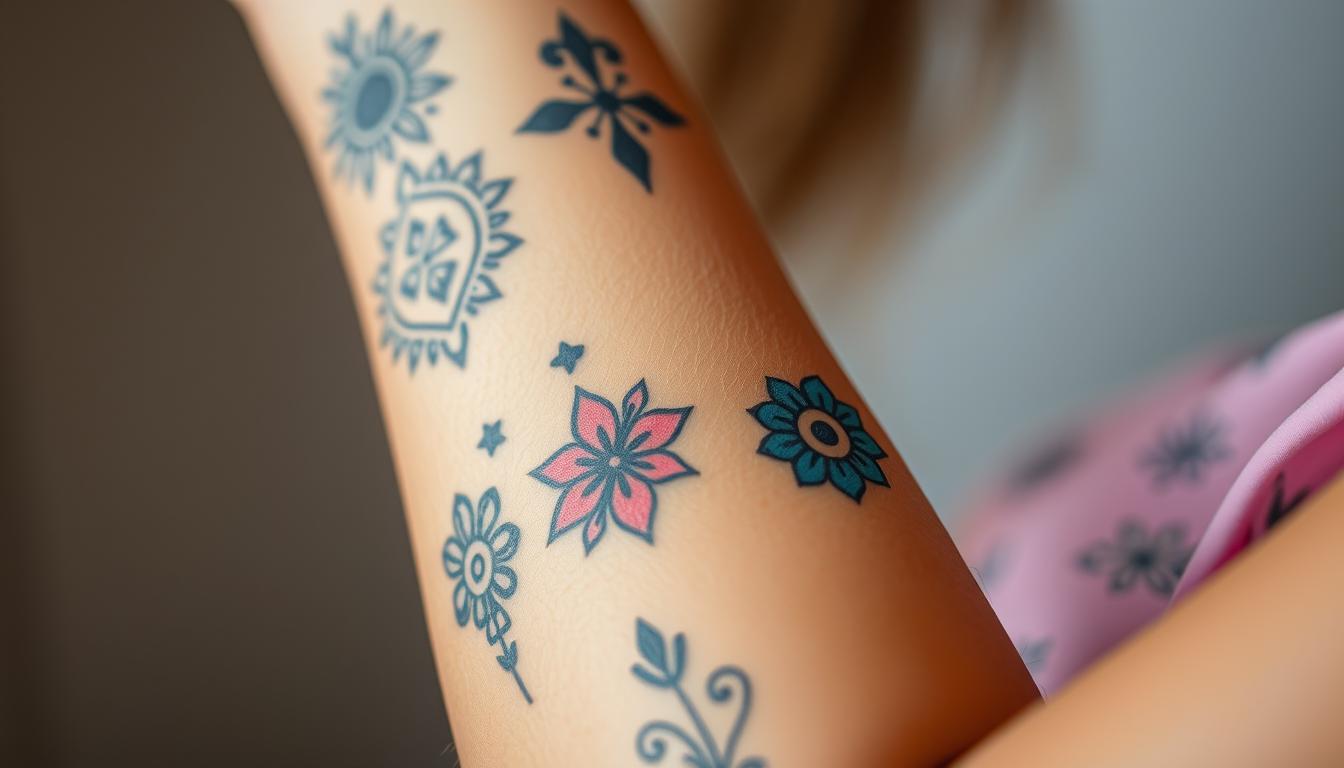
Imagine rocking bold body art that stays crisp through beach days, workouts, and even that weekend pool party. While most people assume temporary tattoos vanish quickly, their staying power might surprise you. The secret? It’s all about understanding your options and treating your skin like a canvas.
From vibrant stick-on designs to intricate henna patterns, modern alternatives let you experiment with self-expression without permanent commitment. Whether you’re testing ideas for real ink or simply love changing your look, these creative solutions adapt to your lifestyle.
Your skin type, placement choices, and aftercare routines play crucial roles in preserving your body art. A tropical vacation might shorten its life, while careful maintenance could keep colors popping for special events. Ready to become a temporary tattoo pro?
Key Takeaways
- Duration ranges from 2 days to 3 weeks based on tattoo type
- High-quality custom designs often outlast generic options
- Proper skin preparation extends artwork longevity
- Different styles serve unique purposes (events vs daily wear)
- Non-permanent options reduce commitment anxiety
Understanding Temporary Tattoos and Their Lifespan
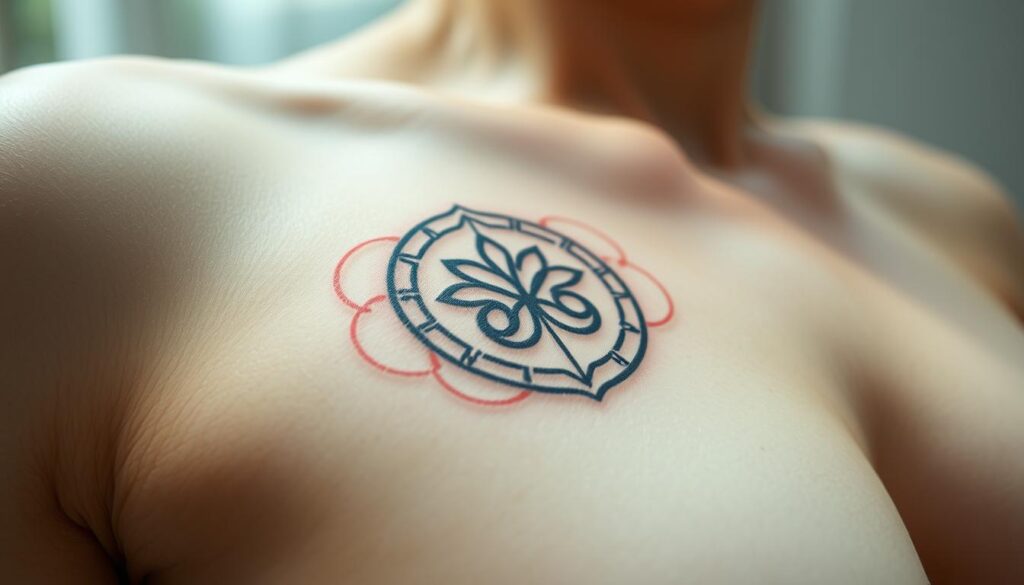
Your body becomes a living art gallery with removable designs that mirror permanent ink. Modern body art options stick around just long enough to match your mood or outfit, blending biology with creativity.
Exploring Different Tattoo Types
Four main styles dominate the removable body art scene. Water-transfer stickers use adhesive films that cling to your skin’s surface, while airbrush artists spray pigment for detailed effects. Henna stains cells with plant-based dyes, and jagua creates blue-black patterns through fruit extracts.
| Type | Duration | Best For | Application |
|---|---|---|---|
| Water Transfer | 3-7 days | Quick changes | Press & peel |
| Airbrush | 5-10 days | Detailed art | Spray stencil |
| Henna | 1-3 weeks | Cultural events | Paste drying |
| Jagua | 10-18 days | Bold statements | Gel application |
The Role of Skin Renewal in Tattoo Duration
Your outer skin layer refreshes itself every 14 days like clockwork. This natural exfoliation process gradually lifts pigment particles from water-based designs. As dermatologist Dr. Lisa Harper explains:
“The epidermis acts as biological sandpaper – it constantly sheds cells carrying temporary ink downward.”
Permanent versions work differently. Needles drive pigment into the dermis, where immune cells trap color particles. This deeper layer doesn’t shed, explaining why real ink stays for life.
how long do temporary tattoos last
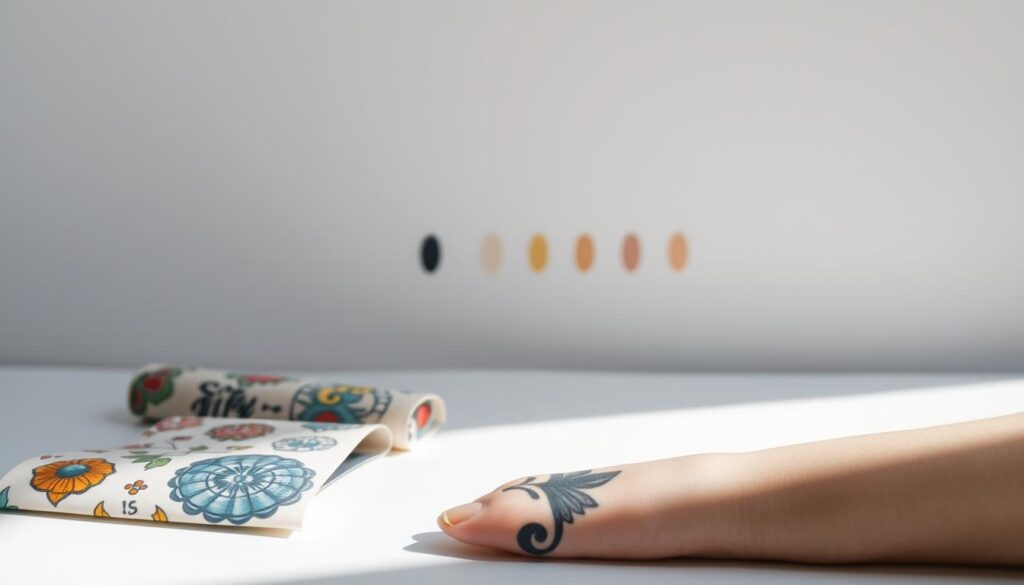
Every style of removable body art comes with its own expiration date. Whether you’re accessorizing for a concert or testing placement ideas, matching designs to their natural lifespan ensures your skin stays gallery-ready.
An Overview of Expected Lifespans by Type
Water-transfer designs lead the pack for versatility, sticking around 3-7 days. These popular picks survive beach trips and gym sessions better than sticker versions that fade in 24-72 hours.
Natural options like henna outlast synthetics. The plant-based paste stains skin cells for 7-21 days, while jagua’s fruit-derived gel creates 10-18 day indigo patterns. Both deepen in color before gradually fading.
| Style | Average Wear | Peak Vibrancy |
|---|---|---|
| Metallic | 3-6 days | First 48 hours |
| UV Reactive | 1-2 days | Under blacklight |
| Airbrush | 2-7 days | Immediate |
| Custom Ink | 3-7 days | Days 2-4 |
Specialty options trade longevity for unique effects. Glow-in-the-dark creations shine brightest within 48 hours, making them ideal for raves or themed parties. As body art specialist Mia Torres notes:
“The best temporary tattoos align with your schedule – pick quick-change stickers for spontaneity or henna for vacations where you want lasting impact.”
Your lifestyle dictates the perfect match. Need something through back-to-back meetings? Semi-permanent ink lasts 1-2 weeks. Prepping for Saturday night? Try spray-on art that washes off Sunday morning.
Key Factors That Affect Tattoo Duration

Your skin’s unique biology acts as both canvas and clock for removable body art. Three key elements determine whether your design fades in days or weeks: your body’s natural chemistry, prep work before sticking it on, and how you move through daily life.
Skin Type and Pre-Application Preparation
Oily complexions face an uphill battle – natural skin oils break down adhesives faster than dry skin. Acidic pH levels create similar challenges, weakening pigment bonds. Dermatologist-approved prep steps help:
- Exfoliate gently to remove dead cells
- Cleanse with alcohol-free wipes
- Pat skin completely dry
Avoid moisturizers for 2 hours before application. This creates a grippy surface for better adhesion.
Impact of Water, Friction, and Daily Activities
Hands and feet lose designs fastest due to constant motion and washing. Tight waistbands? They’ll scrub off hip art during yoga sessions. Smart placement matters:
- Upper arms outlast fingers by 3x
- Back designs survive showers better
- Avoid bra straps and sock lines
Blot sweat instead of wiping, and skip long baths. As fitness coach Marco Ruiz advises:
“Treat your body art like fancy makeup – protect it during workouts and chores.”
Pre-Application and Aftercare Tips for Extended Wear
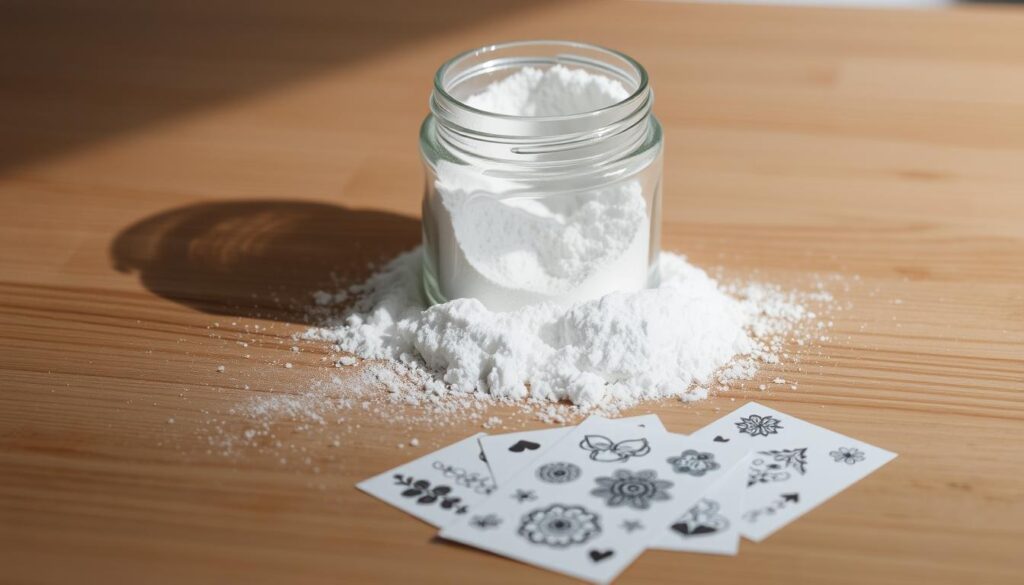
Your skin deserves VIP treatment when showcasing removable body art. Simple preparation and smart maintenance turn fleeting designs into durable masterpieces that survive summer adventures and busy schedules.
Preparing Your Skin for Application
Start with a clean slate. Wipe away oils and lotions using alcohol-free cleansers – greasy surfaces repel adhesives. Gently exfoliate to create a smooth canvas, focusing on areas like elbows or knees.
Shave hairy zones 24 hours before applying tattoo designs. This prevents irritation and ensures full contact with your skin. Wait until any redness fades before pressing on your chosen artwork.
Aftercare Best Practices
Baby powder becomes your secret weapon after placement. Dust it lightly over dried designs to absorb moisture and reduce friction from clothing. For extra protection, try this pro combo:
- Spray unscented hairspray from 12 inches away
- Let dry completely before dressing
- Reapply powder after showers or sweating
Tattoo artist Jenna Cole recommends:
“Treat your design like delicate lace – pat dry instead of rubbing, and avoid tight fabrics over the artwork.”
These tips help make temporary creations last through multiple outfit changes. With proper care, your body art stays crisp until you’re ready for something new.
Best Practices for Application Techniques and Design Placement
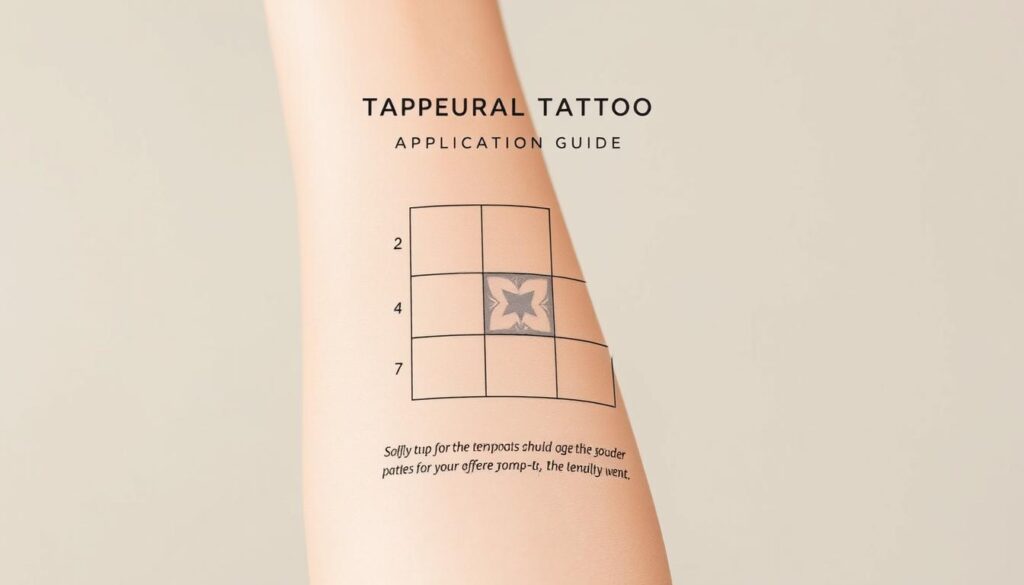
Transform your skin into a masterpiece that stays vibrant longer with smart placement and application know-how. Where you put your body art and how you apply it can mean the difference between a fleeting doodle and a week-long statement.
Choosing the Optimal Body Locations
Flat surfaces with minimal bending win the longevity game. These prime spots resist peeling and fading:
- Upper arms – Shielded from clothes and sunlight
- Back & chest – Protected during daily activities
- Outer thighs – Avoids chair friction
Steer clear of problem zones like fingers and ankles. Tattoo artist Elena Martinez warns:
“Designs near joints crease like accordions – save those spots for quick-change decals.”
Technique Variations for Different Types
Each style demands unique handling. Master these pro moves:
| Type | Application Tip | Duration Hack |
|---|---|---|
| Water-Transfer | Press firmly for 30 seconds | Seal edges with clear balm |
| Henna | Let paste dry 6-8 hours | Wrap with breathable cloth |
| Airbrush | Hold nozzle 6″ away | Set with talc powder |
| Jagua | Apply thin layers | Avoid water for 12 hours |
Match your design placement to your week’s plans. A calf tattoo survives hiking trips, while collarbone art shines under off-shoulder tops. Your body becomes the ultimate accessory when you work with its natural contours.
Enhancing Longevity with Pro Tips and Quality Products
Unlock the full potential of your body art with professional-grade solutions. These clever hacks turn ordinary designs into resilient masterpieces that survive summer adventures and busy schedules.
Using Setting Sprays, Primers, and Liquid Bandages
Liquid bandage creates an invisible shield over your artwork. Apply it to transfers or pen-drawn designs for waterproof protection. Face primer works similarly – smooth it over dry tattoos to lock pigments in place.
Translucent powder adds surface armor against friction. For moisture-prone areas, petroleum jelly forms a water-repellent barrier. Combine these with non-oily makeup fixatives for salon-quality staying power.
Selecting Reputable Brands and Products
Quality ingredients make all the difference. Trusted brands use skin-safe adhesives and vibrant pigments that cling better to your skin’s surface. Look for hypoallergenic options if you have sensitive skin.
Check reviews for products tested in real-life scenarios – pool days, workouts, or humid climates. Premium options often include application tools for precise placement. Your body deserves art that stays bold without compromising comfort.
